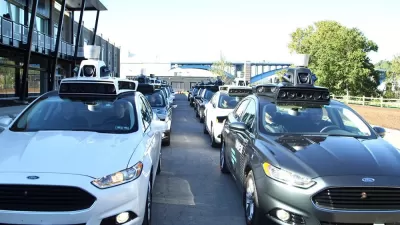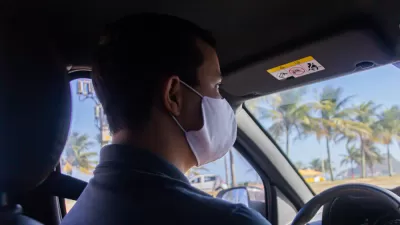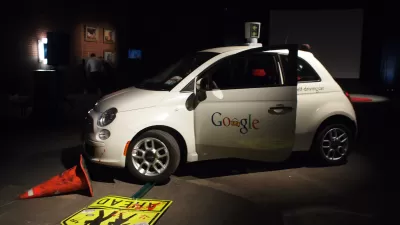In the wake of a high-profile (and fatal) accident involving an autonomous Uber car, the safety debate is trending. But the broader economic picture still points to a future of shared driverless rides.

After an Uber self-driving prototype struck and killed a pedestrian in Arizona, the company has suspended test operations in other cities. But according to this piece from the Economist, self-drivers will likely hit the streets as fleets of "robotaxis" in the Uber vein, not as privately-owned vehicles. That is, if the technology can be made safe enough.
"Although today's experimental vehicles are modified versions of ordinary cars, with steering wheels that eerily turn by themselves, future AVs will have no steering wheel or pedals and will come in all sorts of shapes and sizes; pods capable of carrying six or eight people may prove to be the most efficient design."
The economic argument here is that robotaxis can earn for most of the day, while private vehicles sit idle most of the time. "The initial deployment of self-driving vehicles as robotaxis makes sense because they only need to work within a particular area—and because the sensors needed for a fully autonomous AV to sense its surroundings and figure out how to respond currently cost more than the vehicle itself."
The piece conjectures that in several decades, robotaxis will account for the majority of urban miles travelled. That'll open up plenty of land currently used for parking. "Eventually, perhaps by 2030 or so, the cost of sensors will fall and it will no longer be prohibitively expensive to buy your own self-driving vehicle. The question then is whether you would want to."
FULL STORY: Why driverless cars will mostly be shared, not owned

Alabama: Trump Terminates Settlements for Black Communities Harmed By Raw Sewage
Trump deemed the landmark civil rights agreement “illegal DEI and environmental justice policy.”

Study: Maui’s Plan to Convert Vacation Rentals to Long-Term Housing Could Cause Nearly $1 Billion Economic Loss
The plan would reduce visitor accommodation by 25% resulting in 1,900 jobs lost.

Why Should We Subsidize Public Transportation?
Many public transit agencies face financial stress due to rising costs, declining fare revenue, and declining subsidies. Transit advocates must provide a strong business case for increasing public transit funding.

Paris Bike Boom Leads to Steep Drop in Air Pollution
The French city’s air quality has improved dramatically in the past 20 years, coinciding with a growth in cycling.

Why Housing Costs More to Build in California Than in Texas
Hard costs like labor and materials combined with ‘soft’ costs such as permitting make building in the San Francisco Bay Area almost three times as costly as in Texas cities.

San Diego County Sees a Rise in Urban Coyotes
San Diego County experiences a rise in urban coyotes, as sightings become prevalent throughout its urban neighbourhoods and surrounding areas.
Urban Design for Planners 1: Software Tools
This six-course series explores essential urban design concepts using open source software and equips planners with the tools they need to participate fully in the urban design process.
Planning for Universal Design
Learn the tools for implementing Universal Design in planning regulations.
Smith Gee Studio
Alamo Area Metropolitan Planning Organization
City of Santa Clarita
Institute for Housing and Urban Development Studies (IHS)
City of Grandview
Harvard GSD Executive Education
Toledo-Lucas County Plan Commissions
Salt Lake City
NYU Wagner Graduate School of Public Service





























